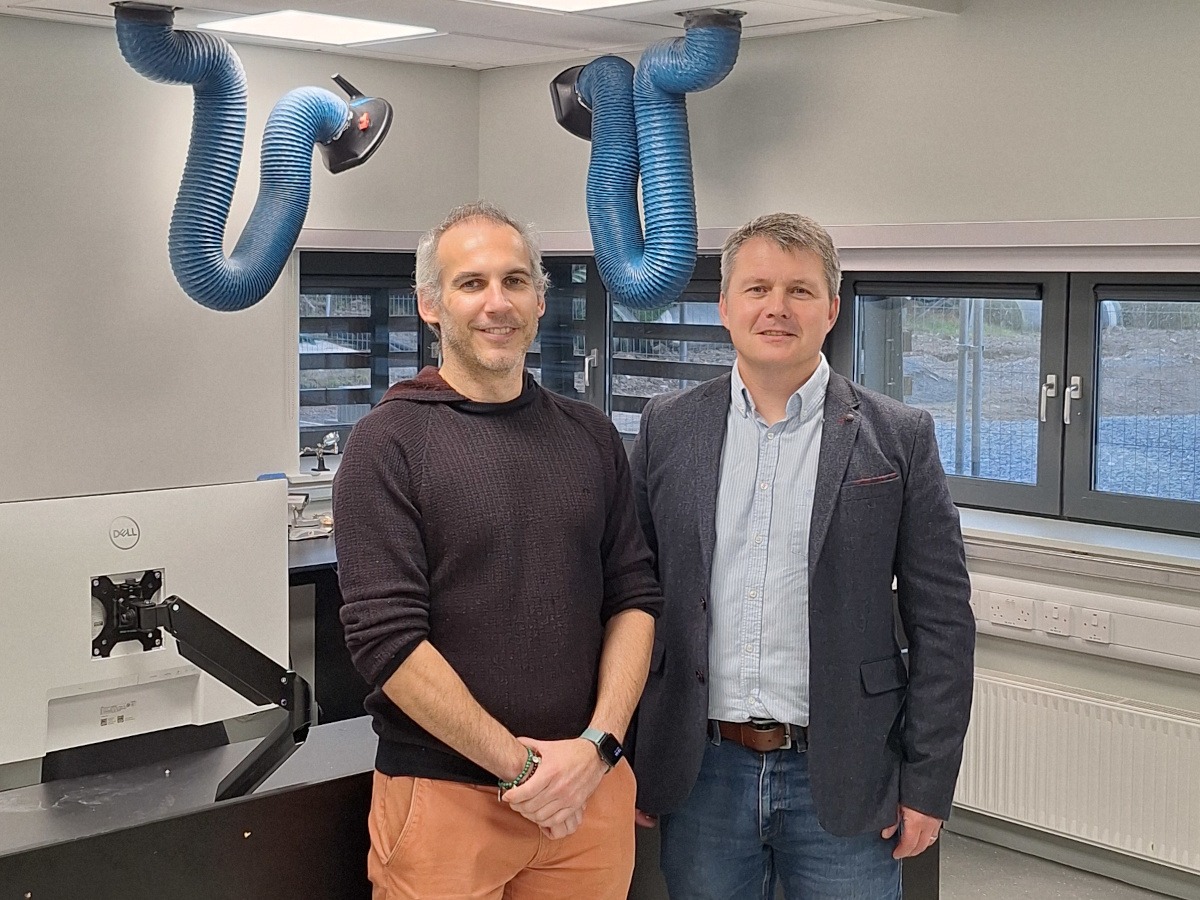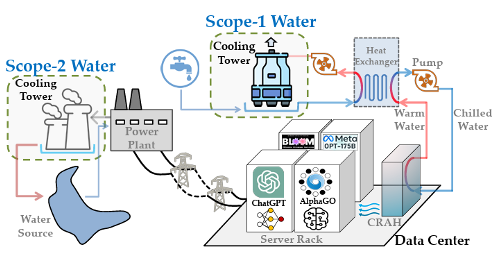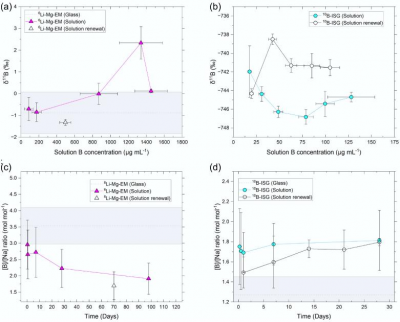KARACHI:
Three Special Investigation Unit assistant sub-inspectors and four…

Three Special Investigation Unit assistant sub-inspectors and four…

Katie Archibald won a silver medal in the women’s elimination race while Great Britain claimed bronze in the women’s team pursuit at the Track World Championships.
Two-time Olympic champion Archibald was competing in the elimination for the first…

Purifying mRNA remains a persistent challenge for researchers developing vaccines and RNA-based therapeutics. Variability in yield, purity, and reproducibility can complicate process development and hinder scalability, particularly when handling…

The ATLAS collaboration is one of the biggest scientific projects ever, with more than 5,500 members across 40 countries.
Just days after Ireland confirmed its associate membership of the European Organization…

It’s become common to see Aussie teenager Gout Gout hailed as the future of the short sprints.
But the 17-year-old from Queensland proved he has much more to his game with an impressive 400m victory at the GPS Track and Field Championships in…

By Camila Idrovo
Colombia’s data centre market is expanding at a remarkable pace, fuelled by the rise of artificial intelligence (AI). As of 2025, the country hosts 38 data centres — 29 in Bogotá, 4 in Medellín, 3 in Cali, and 2 in Barranquilla — with several more on under development. Valued at US$442 million in 2024, the sector is expected to nearly triple to US$1.16 billion by 2030, growing at an annual rate of 17.6%.
This boom promises major opportunities in digital infrastructure and foreign investment. Yet it also brings serious sustainability challenges. Data centres are notoriously resource-intensive, consuming vast amounts of water for cooling and electricity to keep servers running.
Recognising both the potential and the risks, the Colombian government launched a US$111.5 million National AI Policyin February 2025. The plan seeks to decentralise data centre infrastructure and promote hyperscale facilities powered by renewable energy and water-efficient technologies.
The pressing challenge now is ensuring that Colombia’s AI-driven data centre boom drives inclusive economic growth while safeguarding the country’s water and energy resources.
Water Stress
AI’s rapid growth comes with a heavy water footprint. Globally, meeting demand for AI could require up to 6.6 billion cubic meters of water withdrawals by 2027. Data centre water consumption is driven by cooling (Scope 1), electricity usage (Scope 2), and hardware manufacturing (Scope 3).
To address environmental concerns, some providers are experimenting with air-cooling systems that reduce direct water withdrawals. However, these systems are often more energy-intensive, which can increase Scope 2 water use. The lack of reliable data on Scope 3 impacts further complicates assessments, highlighting the need for more transparent and comprehensive reporting.
Example of a data centre’s operational (scope 1+2) water usage
Colombia faces particular risks. New data centres are planned in hot regions such as Santa Marta, where cooling demands will be especially high. Even Bogotá, with its milder climate, faces serious water availability concerns. Between 2023 and 2024, the city experienced once of its worst droughts on record, with its reservoir levels falling to just 10.5%.
Adding to the challenge, Colombia is already one of the world’s top consumers of water per capita, using nearly three times the OECD average. This is partly driven by industrial users facing some of the lowest water tariffs in the region. In 2023, Coca-Cola reportedly paid just US$2,605 to extract 64 million litres near Bogotá. At US$0.008 per cubic meter, Colombia’s industrial water tariff is a fraction of Mexico’s (US$0.99) or Brazil’s (US$0.036).
Colombia’s governance framework is not keeping up with these mounting pressures. An evaluation of the National Policy for Integrated Water Resources Management (2010–2022) found that the country lacks adequate data on water demand, while Bogotá’s District Water Plan, due for an update in 2021, has yet to be revised. Both national and local policies urgently need updating to integrate future water use projections tied to data centre growth.
Without stronger governance and more realistic tariffs, water scarcity could not only constrain Colombia’s AI-driven data centre industry but also threaten access to clean water for communities, exacerbating social and environmental stresses across the country.
Energy use
AI is driving a sharp rise in data centres’ energy needs. While traditional facilities consume between 10 and 25 megawatts (MW) annually, hyperscale AI-focused centres can exceed 100 MW — the equivalent of powering 100,000 households. Because these facilities often cluster in specific cities, their concentrated demand puts major stress on local power grids.
To manage both energy security and carbon footprints, many operators are investing in renewable sources. These projects can accelerate growth in the clean energy sector, but much of the power produced is consumed by the centres themselves, limiting the amount of renewable energy available to the wider grid.
Colombia’s relatively clean electricity mix has helped attract investment. In 2023, 64.4% of power came from hydropower, while 31.8% came from fossil fuels, and only 1.2% from solar and wind. The country’s heavy reliance on dams, however, leaves the system vulnerable. Recent droughts forced greater use of fossil fuels to meet demand, undercutting Colombia’s climate goals. Without a rapid scale-up of solar and wind capacity, rising demand from data centres risks locking the country into deeper dependence on fossil energy, with consequences for both emissions targets and long-term energy security.
Electricity generation sources in Colombia, 2023
Over the past three decades, Colombia has modernised its energy sector and welcomed private investment, spurring diversification and infrastructure growth. Still, persistent barriers remain. There are gaps in transmission capacity, delays in environmental licensing, and strong community opposition to new projects. Unless these challenges are resolved, Colombia will struggle to expand renewable energy fast enough to keep pace with the demands of an AI-driven data centre boom.
Because data on Colombia’s data centre impacts remains limited, it is useful to look at two regional leaders, Mexico and Chile, where the sector is more mature. Both cases offer valuable lessons for Colombia as it expands its own market.
Mexico
Mexico’s data centre market is projected to reach US$2.26 billion by 2030, growing at an annual rate of 13.5%. The country already hosts 59 centres, with nearly a third concentrated in Querétaro. Tech companies have pledged thousands of jobs and billions in investments, but these promises come with serious environmental trade-offs.
Querétaro is one of Mexico’s most drought-prone states. Yet industrial water use there skyrocketed from 4% of total consumption in 2003 to 40% by 2018. The surge has fuelled protests from indigenous and rural communities, driven up water costs for residents, and left local reservoirs under severe stress. In April 2025, two of the state’s seven reservoirs were completely dry, and overall capacity dropped to just 32.5%. Energy shortages have compounded the crisis, with frequent power outages as the regional grid struggles to keep up with rising demand.
Despite these risks, investment continues. In January 2025, Amazon Web Services announced a US$5 billion investment in Querétaro to serve all of Latin America. Mexico does have a sustainability norm for data centres introduced in 2014 (NMX-489), but because compliance is voluntary, its impact has been limited.
Querétaro’s experience underscores a key warning for Colombia. Without proactive water and energy management, rapid data centre growth can quickly outpace local resources and spark social unrest.
Planned data centre investments in Mexican states under drought.
Source: Menski et al. (2024)
Chile
Chile’s data centre market is projected to hit US$1.24 billion by 2030, growing at a CAGR of 8.27%. The country currently has 62 centres, 55 of them clustered in Santiago. But Chile is also one of the world’s most water-stressed nations, and public opposition has been strong.
In 2024, Google was forced to suspend a planned US$200 million data centre in Santiago after citizen mobilisation and a partial court reversal of its environmental permits. The company later committed to redesigning the project with stricter sustainability standards and more water-efficient technologies.
To address these challenges, Chile recently launched its National Data Centre Plan (2024–2030), developed through multi-stakeholder consultations. The plan includes a digital tool to guide sustainable site selection, a multi-stakeholder monitoring committee, streamlined permitting processes, and public–private clean production agreements to boost efficiency. It also encourages the creation of AI campuses in regions with abundant renewable energy resources, reducing pressure on water-stressed areas like Santiago.
Chile’s proactive approach highlights the importance of early planning, strong stakeholder engagement, and enforceable sustainability standards; lessons Colombia can apply before its own boom accelerates further. That said, it remains to be seen how effectively the plan will be implemented in practice and whether it can truly balance data centre growth with water and energy sustainability.
Colombia is not yet fully prepared to manage the environmental impacts of rapid data centre expansion. To address this challenge, the following recommendations draw on Professor Mariana Mazzucato’s Entrepreneurial State framework. Unlike traditional models that view the state as a passive actor intervening only after market failures occur, this approach positions the state as a proactive market-shaper capable of driving more inclusive and sustainable outcomes.
The framework rests on four core principles: setting a clear direction for change; building the capabilities necessary to drive that change, including sectoral knowledge, risk-taking, and patient finance; adopting dynamic metrics that capture long-term and spillover effects; and ensuring the equitable sharing of both risks and rewards. The recommendations below are structured around these principles.
Set a Direction
Colombia’s National AI Policy sets a strategic direction by tasking the Ministry of Science, Technology, and Innovation with designing and implementing, between 2025 and 2026, a mechanism to accelerate data centre development with a focus on renewable energy and water-efficient technologies. To turn this vision into reality, the government should:
1. Urgently update water management plans at the national and city levels, particularly in areas expecting new facilities. Plans should integrate real-time data on water supply and demand to guide sustainable growth.
2. Embed environmental conditionalities in licensing and public procurement. These include requiring data centre developers to submit detailed technical specifications and projections for water and energy use and mandating the use of resource-efficient technologies accounting for the full spectrum of water use (Scope 1, 2, and 3).
Build Capabilities
To effectively manage data centre expansion and ensure environmental risks are mitigated, the government should invest in developing local expertise and infrastructure. This means not only regulating the sector but also equipping public institutions with the necessary knowledge and resources. To achieve this, the government should:
3. Strengthen public sector expertise by employing AI and data centre specialists, ensuring government agencies have the necessary knowledge to make informed decisions and effectively evaluate the technical information provided by data centre operators.
4. Establish co-investment mechanisms that leverage public, private, and multilateral funding to expand renewable energies and improve water management systems. This funding should be directed not only towards meeting data centre needs, but also to covering the water and energy requirements of low-income households.
5. Support national research and innovation to develop and test solutions for energy and water efficiency. This aligns with Action 3.1 of the National AI Policy, which funds AI-related R&D projects led by universities, research institutions, and private-sector partners.
Use Dynamic Metrics
To effectively manage the impact of data centres, it is essential to move beyond static metrics and ensure real-time data is continuously available. This will enable more responsive and effective resource management, especially during emergencies. To this end, the government should:
6. Install smart meters in data centres to provide real-time water and energy data to authorities. These data streams can feed into AI-powered tools for land use and resource planning that will be developed under Action 6.12 of the National AI Policy.
7. Develop a comprehensive monitoring and evaluation framework that tracks not only economic returns, but also spillover environmental and social impacts.
Share the Risks and the Rewards
With many data centre operators in Colombia being foreign owned, there is a risk that the sector could perpetuate an extractive model, whereby multinationals extract wealth and resources while the government and local communities bear the brunt of the environmental and social costs. To equitably share both the risks and the rewards of the data centre market, the government should:
8. Urgently increase industrial water prices to better reflect the true costs of water and the externalities its extraction imposes on the environment. Energy prices should also be adjusted to more accurately account for Scope 2 water consumption. The water and energy tariffs for data centre providers and other high-water use industries should remain flexible throughout the year, with the option to increase them during periods of water scarcity. This will help regulate demand while encouraging more efficient water use.
9. Integrate conditionalities in the licensing processes for data centres and related renewable energy projects, requiring a small percentage of their computing and energy capacity be reserved at a reduced cost for use by Colombian universities, research institutions, and private sector partners working on environmental projects.
10. Pilot geographical load balancing, distributing AI workloads across data centres based on regional water and energy availability, reducing pressure during emergencies.
These recommendations carry both risks and costs that must be carefully managed. One concern is a potential slowdown in Colombia’s data centre market. However, this does not mean halting growth. As noted, Chile’s market is expanding at an annual rate of 8.27%, while Colombia’s is growing at 17.6%. A modest slowdown is a reasonable trade-off if it ensures growth that is both sustainable and inclusive.
Another challenge is potential pushback from data centre operators who may resist stricter regulations or engage in lobbying. Yet Colombia holds a strong comparative advantage. The cost of building a data centre in Bogotá costs just US$7.10 per watt, compared with São Paulo (US$10.10), Querétaro (US$10.00), and Santiago (US$8.30). This gives the country room to implement higher standards without losing competitiveness. As Chile’s experience shows, clear environmental regulations can even encourage companies to adopt more efficient technologies.
From a financial perspective, while a detailed analysis is still needed, these recommendations appear economically advantageous. The government has already allocated US$111.5 million for the National AI Policy, which can support research, capacity building, and monitoring. Additional revenue from higher tariffs and licensing can be invested in strengthening water and energy infrastructure, while long-term environmental costs can be mitigated through effective conditionalities.
Conclusion
Colombia’s AI-driven data centre boom presents significant opportunities for digital growth, investment, and job creation. However, these benefits could be undermined without careful management of water and energy resources. The National AI Policy provides a strong foundation, but its success will depend on the state embracing an entrepreneurial role: setting a clear strategic direction, building the necessary capabilities, adopting dynamic metrics, and ensuring that risks and rewards are shared equitably.
If implemented effectively, Colombia can become a regional leader in developing a digital economy that is fast-growing, sustainable, and inclusive. Conversely, failure to act could provoke strong community opposition, as local water and energy resources may be perceived as being diverted to foreign-owned facilities. Transparent public engagement will be essential to build trust and demonstrate that policies protect both people and ecosystems.
Beyond water and energy, data centres also create other environmental and social pressures, including increased demand for critical minerals, greenhouse gas emissions, e-waste generation, and land-use competition. While these fall outside the scope of this blog, they merit further analysis to fully understand AI’s environmental impact in Colombia.
This paper is an adaptation of a paper submitted on 8 May 2025 for Latin American Economics (AMER0017), an elective course of IIPP’s MPA in Innovation, Public Policy, and Public Value.

Isack Hadjar admits that the prospect of joining Max Verstappen at Red Bull for the 2026 season “really excites me” as speculation grows about where he will be racing next year.
The Frenchman has impressed in his maiden Formula 1 campaign, which…

Madison Chock and Evan Bates started the 2025-26 figure skating Grand Prix season the same way as they ended the last two two – at the top of the rankings.
Skating to a collection of Lenny Kravitz hits, the USA ice dance couple took the lead…


Newswise — By employing boron isotope fingerprinting techniques, the team was able to track the release of boron from two distinct glass compositions, focusing on the role of diffusion through the altered surface…